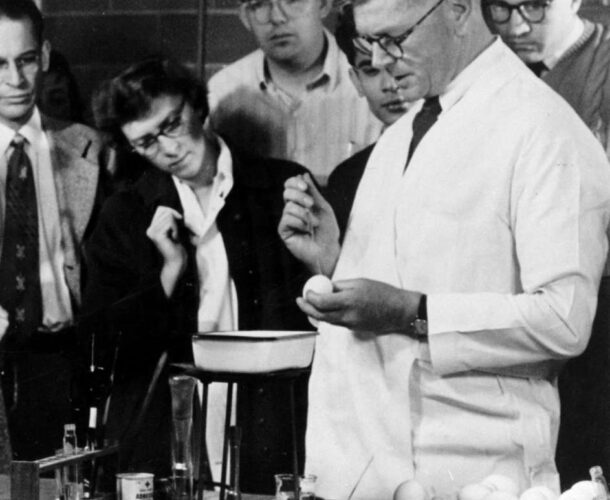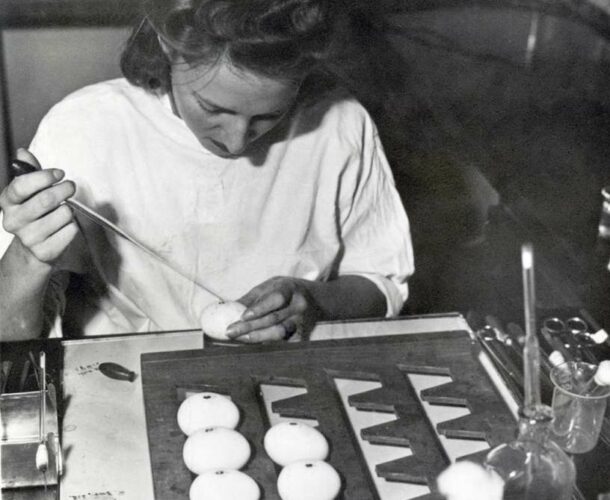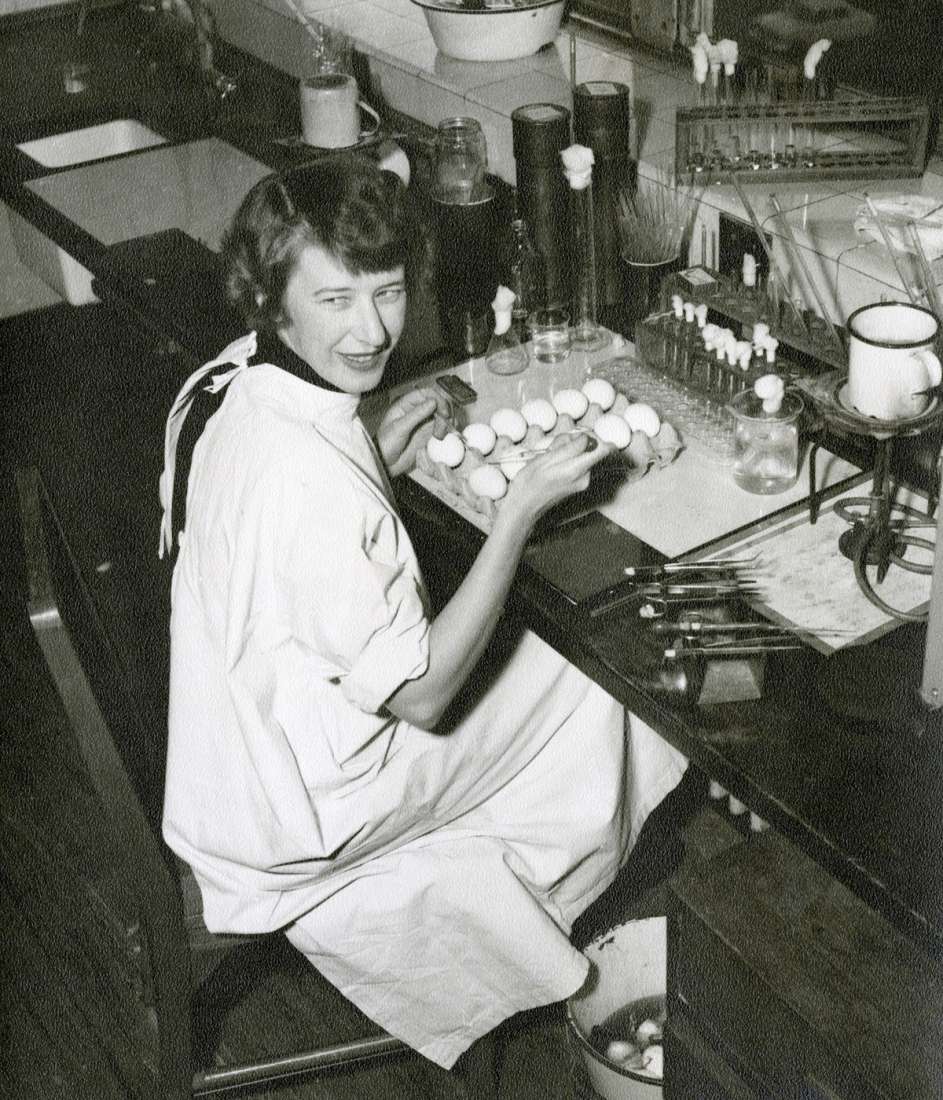In late 1933, Macfarlane Burnet arrives back in Melbourne from England with an old brown suitcase packed with viruses, and dreams for the future.
UK scientists had discovered in the late 1920s that a developing chick egg is an ideal medium in which to grow viruses for study. Burnet explores this method further, acquiring equipment to inoculate and incubate eggs that enables the study of viruses including influenza, myxomatosis and herpes simplex.
Behind him was a two-year Rockefeller Foundation fellowship at the National Institute of Medical Research in Hampstead: ahead, a new era in virology for the Hall Institute – and for Australia.
Virology is unfolding
The world of animal virology is unfolding. Burnet was at Hampstead when the human influenza virus was first isolated and tested in ferrets, a momentous event heralded by one of the pioneering scientist’s now-famous comment, ‘The ferrets are sneezing!’ The fellowship had helped train Burnet in new virus techniques; now he is keen to introduce them at the Walter and Eliza Hall Institute.
Burnet had worked on the canary virus at Hampstead, during which time he started developing a method for growing virus using fertile hen’s eggs. It is a technique he will refine at the Walter and Eliza Hall Institute and use throughout his career in virology and immunology.
It will later by adopted by scientists around the world, and the key to mass producing influenza virus for vaccines.








